The world of rugs and carpets… . I have used that broad and all encompassing phrase countless times in my attempt to codify a term reflective of the immense scale of an industry which includes rugs (and carpets) of almost innumerable permutations. Disparate regions of production, different construction techniques, unique materials, so on and so forth from my beloved handmade, to tufted, to machine-made, to handloomed, to printed, to many maligned inferior products that are a waste of human effort and our resources, the ‘world of rugs and carpets’ is immense and so it is only recently that I have become more acquainted with a niche of the industry which holds the standard of our collective repository of rug and carpet knowledge: the antique and collectible market.
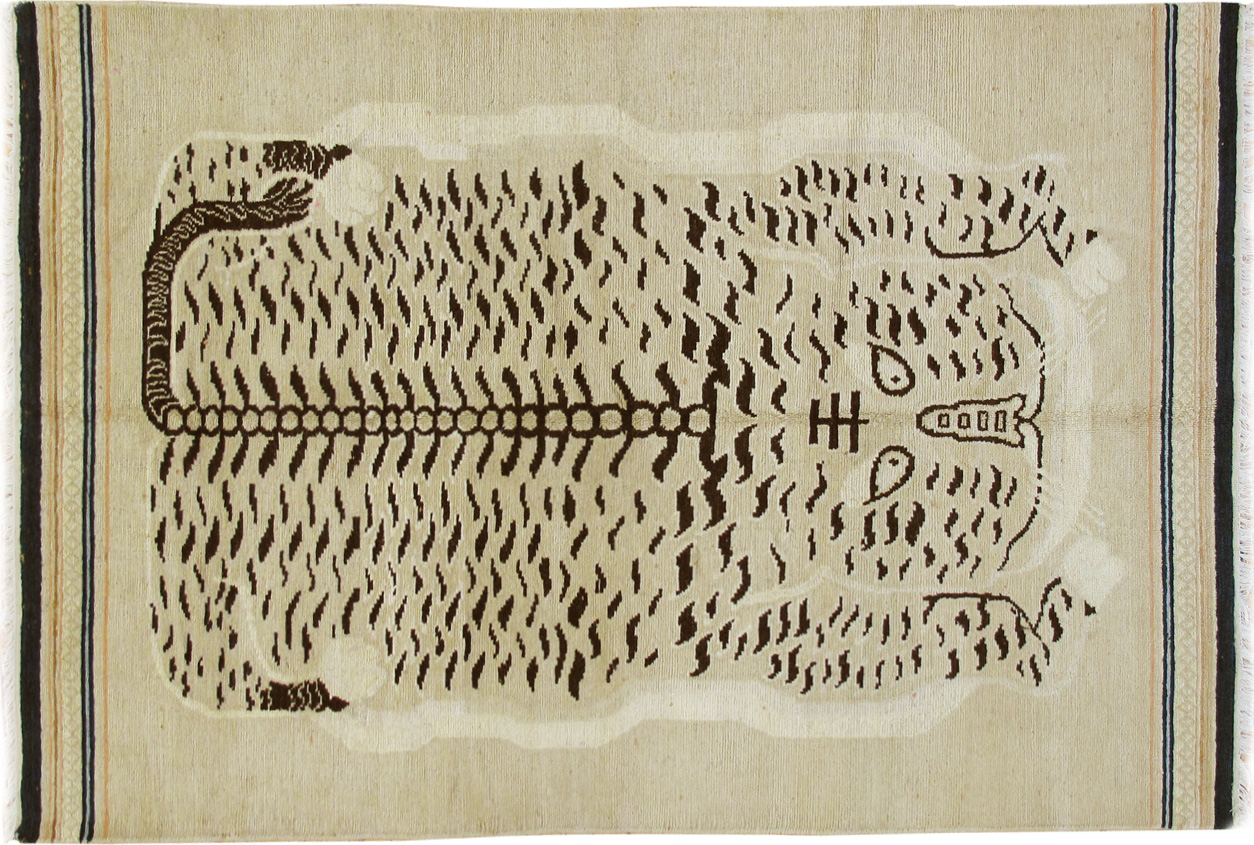
Just over a year ago in June of 2016 I was on holidays visiting with family in Ohio, taking in the magnificent Royal Persian Tent of Muhammad Shah, and visiting with friends in the uberchic Red Hook district of Brooklyn, New York. While in New York I called upon the Outlet Shop of Odegard Carpets. I found a lovely ‘Youngtse’ quality carpet – 100knot Tibetan weave (crossed), handspun Himalayan wool, et cetera, in a palette that all but said: The Ruggist. It now lives in my bedroom. A short time later – while making arrangements to ship the aforementioned carpet home, I decided to have a ‘final’ browse through the firm’s online inventory, just to ‘make sure it was the right decision’. It was as though I was in fact no different than the average decorative carpet consumer: unsure, in need of a bit of hand holding. But then, as if an apparition of rug purchases future materialized in my living room delivering a cautionary tale, I realized – as every casual rug consumer, aficionado, collector, or otherwise should – that I should just buy what I love. And I loved what I saw on the screen before me: ‘Gorden Tiger’. Rrrrrraaawwwwr!
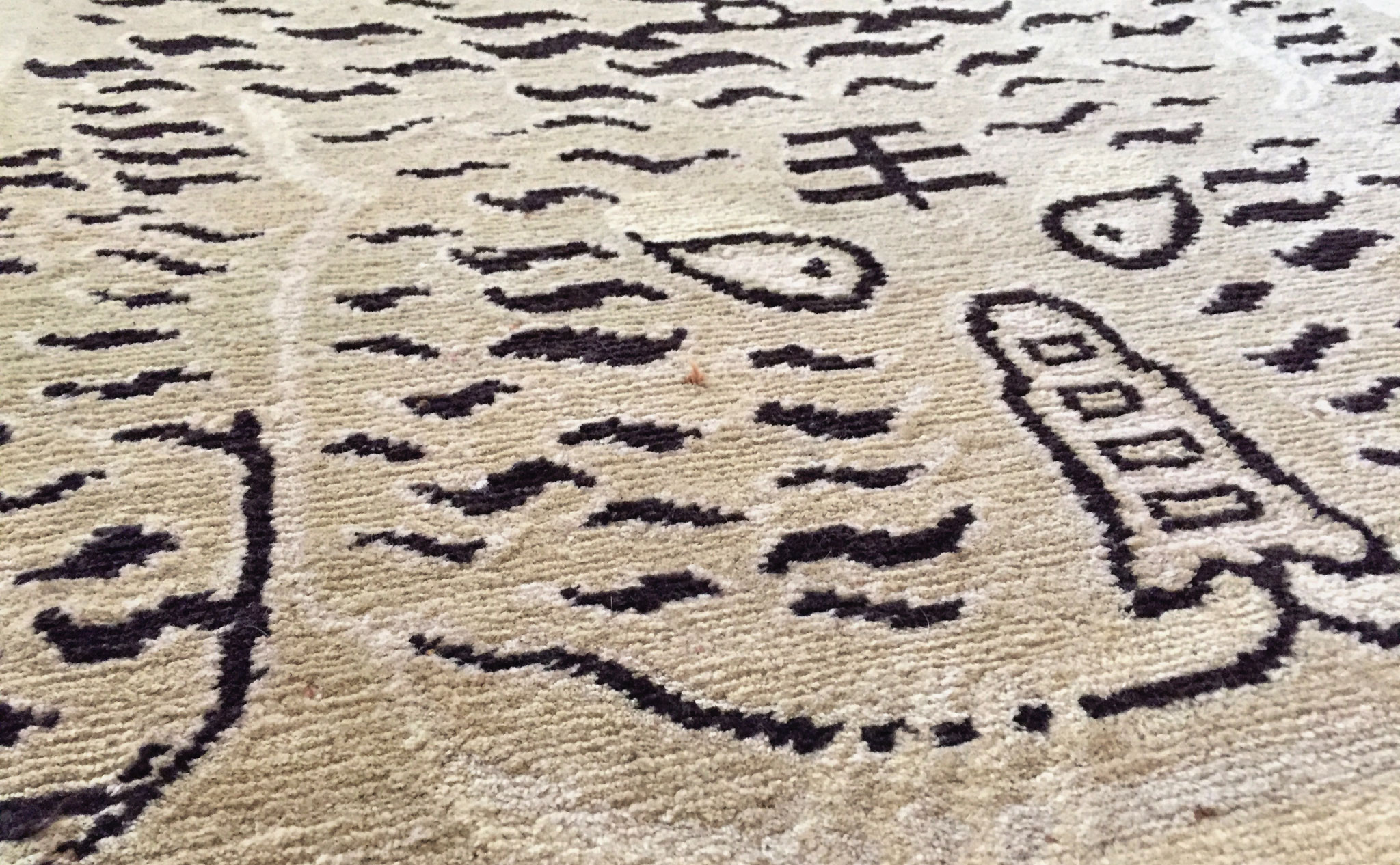
Before that moment I had never once considered myself a collector of carpets, though given the maternal side of my family’s penchant for ‘collecting’ I know not why. ‘What will we do with it?’ rightly asked my partner to which I replied, ‘I have no idea but I absolutely love it!!!!!! I must have it!’ Details were sorted, the designer of the carpet (more on this shortly) told me ‘I love it. I want you to have it.’ and in early autumn 2016 ‘Gorden Tiger’ came to live with me in his forever home. I say this as if he is an adopted cat rescued from the SPCA.
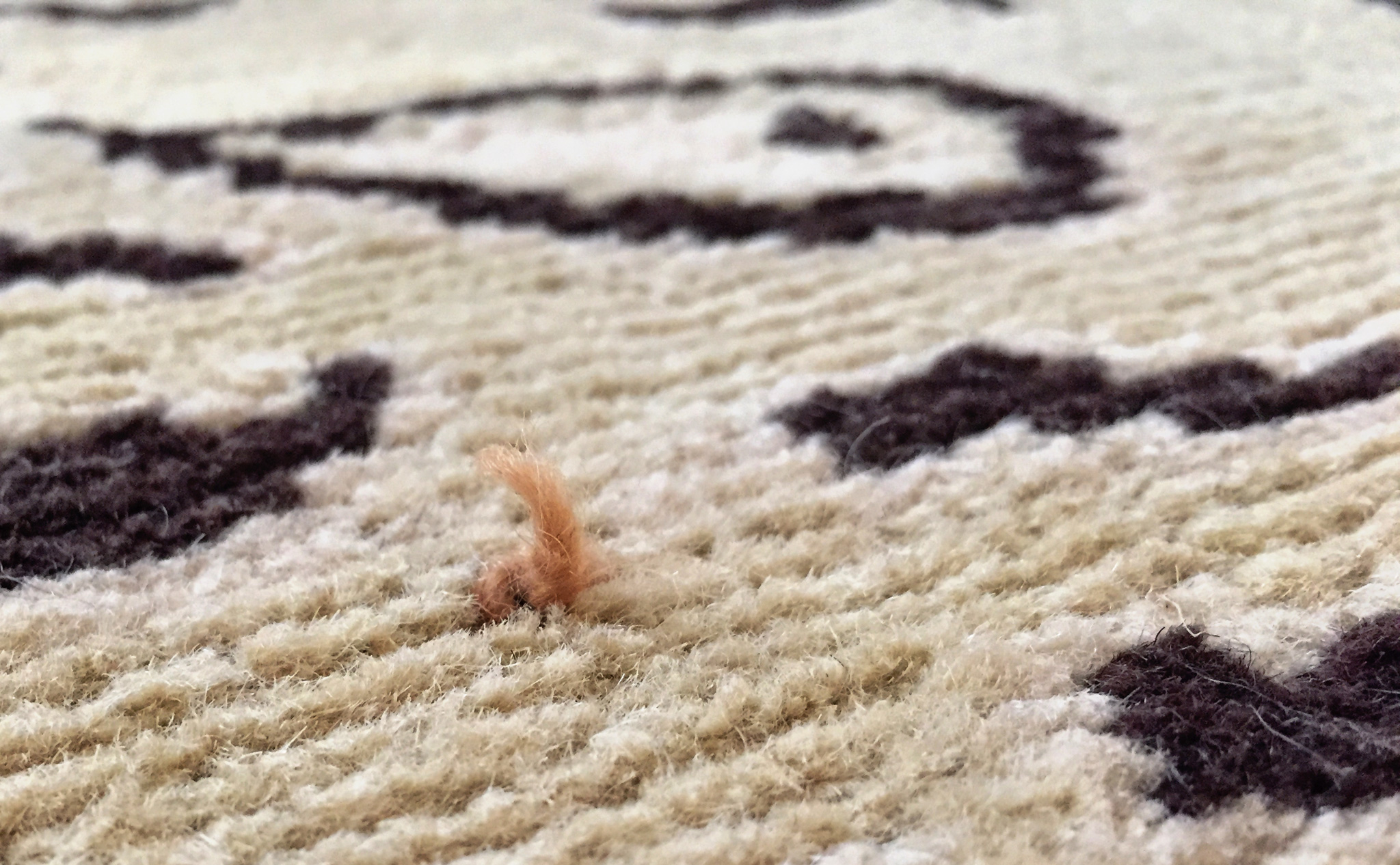
It was, I think, a confluence of great things, of fortuitous timing. Serendipity. Fate. Karma. Earlier in 2016 I had spoken with Elisabeth Parker Poole, then Vice President of Christie’s and the International Department Head of their Rugs and Carpets department for my article: Collectible or Knot: The Value of Handmade Carpets. Collecting was clearly already on my mind, and thus ‘Yes!’ was the answer when the prestigious ‘magazine of record’ (if such a thing exists) of the antique and collectible carpet market, HALI, asked if I would write an article about the ‘Antique Pavilion’ at what now appears to have been the final installment of the New York International Carpet Show (NYICS). Irreverence is not a hallmark of HALI and so it was with serious thought I contemplated the world of collectible carpets, concluding – more or less – that both the decorative realm from which I hail and the collectible realm should work more closely together embracing the differences betwixt the two (2) in order to foster a new generation of collectors.
Now however, I don’t necessarily think it is just a new generation which is needed, but also an appreciation for what collecting truly is: Amassing a trove of (well) curated objects that speak – in some way – to the owner thereof and which have a certain je ne sais quoi. So without further ado allow me to present two (2) different carpets, each collectible in their own way, each suited to a different class of collector, yet both unique, interesting, and – obviously in my opinion – worth collecting.
In deference to all that is time honoured in the world of rugs and carpets, the first to be examined is the type of carpet one would expect to think of as collectible: The ‘Lerch Tiger’ – as I am going to call it – from Max Lerch Exklusive Teppiche in Munich, Germany. ‘It is indeed an amazing piece.’ replied via email Maximilian (Max) Lerch II to my adoring statements praising the carpet. The carpet had been in the same European family – who wishes to remain anonymous incidentally, hence the ‘Lerch Tiger’ – since it was acquired by an ancestor while traveling in Asia between 1890 and 1905. In the intervening years the carpet had remained not only in the same family, but indeed the same home, most recently residing in of all places: a smoking room. ‘It was almost black as it was hanging in the smoking room. You can imagine how happy we were after having it washed three (3) times [during the cleaning process].’ The carpet itself is sized 305CM x 100CM (10.0′ x 3.3′), Tibetan weave, wool pile on a cotton foundation, in what Lerch describes as ‘mint’ condition. An interesting element of the carpet is that the whiskers are horsehair which gives a degree of realistic embellishment to this stunning piece.
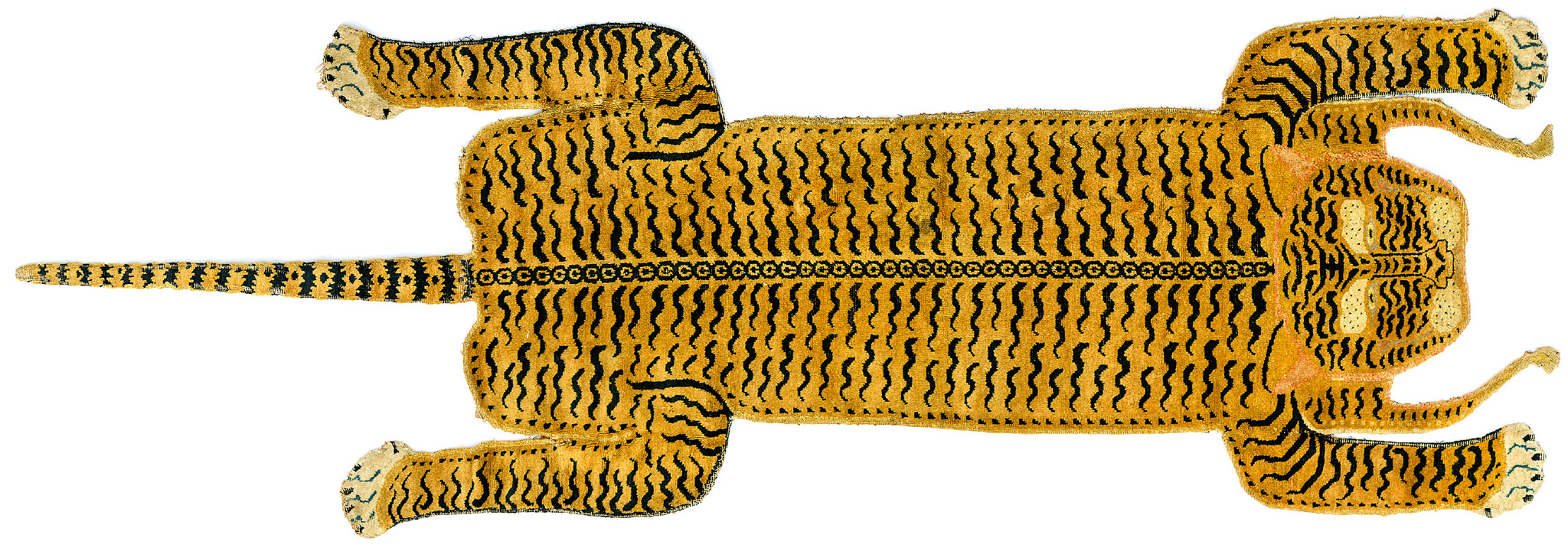
‘I’ve had quite significant offers from various dealers for this piece but honestly I want to know where the future ‘home‘ of this piece will be.’ begins Lerch, ‘This can, at least to me, not be seen with the carpet/rug view but more with respect of it being an international piece of art, like a painting, furniture or other objet d’art. Moreover as being at least as much a collector as a dealer, I am quite comfortable with having it in my hands for a longer time…’ Furthermore Lerch has been contacted by several museums regarding the piece, adding further, dare I say, desirability to it’s collectible nature. Simply put, it is rare, of well documented provenance, and in exceptional condition. All of which command a ‘six figure sum’ value (in Euros).
In contrast to the so-called ‘Lerch Tiger’ let us now examine a carpet no less interesting, simply not yet aged: ‘Gorden Tiger’. ‘Gorden Tiger’ was made sometime between 1987 and 1998 (more research is underway to determine the precise age) by Odegard Carpets of New York. Tom DeMarco designed the carpet with influence from Tufenkian Carpet‘s early embrace of traditional Tibetan Tiger carpets, Mimi Lipton’s seminal tome on the subject ‘The Tiger Rugs of Tibet’, and Stephanie Odegard’s more adaptive and modern use of tiger motifs. It is a medium density, approximately 50knot Tibetan weave carpet sized 229CM x 152CM (7.6′ x 5.0′), made in Kathmandu, Nepal of 100% Himalayan wool on a foundation of cotton warp and wool weft. In ‘mint’ condition, it was made as a research and development piece exploring textures which eventually created Odegard’s ‘Abu’ quality. It’s fringes were originally visible, but have been bound to the underside as is the style of the era. It is a one-of-a-kind carpet in every sense of the term. Furthermore, ‘Gorden Tiger’ is named after a character in an influential film from the designer’s life ‘Local Hero’, which while of no real consequence to the casual observer, provides that much more insight; plus, it makes a great story. ‘Gorden Tiger’ did not, nor does it currently command a price anywhere near a six (6) figure sum (unless of course we use a currency of relatively low value compared to the US Dollar or Euro, but I digress).
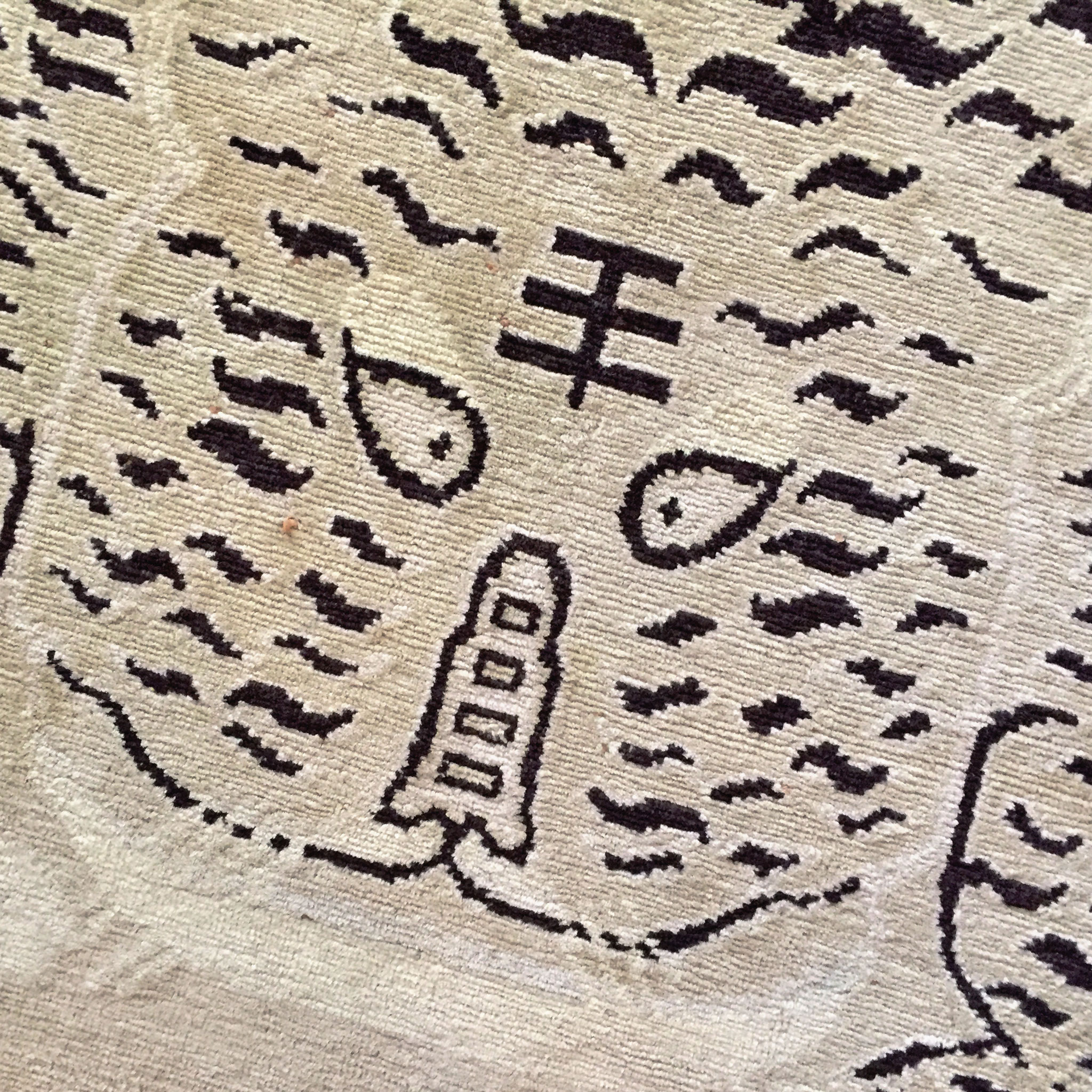
The similarities between the carpets – not aesthetically other than both being of a tiger design – are easy to see. Rare or one-of-a-kind, great condition, interesting stories, and a sense of parenting or stewardship. Both Lerch and DeMarco each want or wanted the carpet in question to go to a home that would appreciate the piece for what it is. This is the mindset of a collector. One that asks not only, ‘Is it beautiful?’ but also further, ‘What is it?’ to paraphrase from my HALI article.
‘Alice asked the Cheshire Cat, who was sitting in a tree, ‘What road do I take?’ The cat asked, ‘Where do you want to go?’ ‘I don’t know,’ Alice answered. ‘Then,’ said the cat, ‘it really doesn’t matter, does it?” ― Lewis Carroll, Alice’s Adventures in Wonderland
These are two (2) very distinct carpets and two (2) very distinct manners of collecting carpets. The ‘Lerch Tiger’ with its established century long provenance and rarity is quintessentially collectible, its value and desirability already determined by the market. The desire to own it is understandable, and for those with the means and will, is certainly an object worth whatever price it eventually fetches. ‘Gorden Tiger’ on the other hand is no different now than the ‘Lerch Tiger’ was in fin de siècle Europe: a beautiful carpet, desirable and admired by its owner. A souvenir of travels or perhaps a totem of a moment in time that altered the course of one person’s life and career; purchased simply because it is beautiful, admired however, because of what it is.



